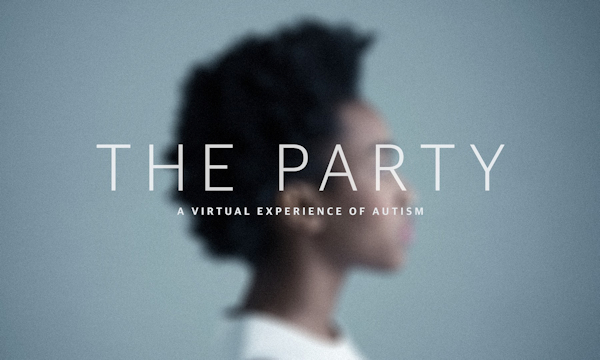[This press release from The Guardian announces a new virtual experience designed to help increase empathy and understanding of autism; for other similar efforts, see articles in the Times of Malta and Lovin Malta, and the UK’s National Autistic Society. –Matthew]

Guardian launches The Party – A virtual experience of autism
9 October 2017
The Guardian is pleased to announce the launch of The Party – A virtual experience of autism, the publisher’s latest virtual reality (VR) project.
The Party places viewers in the shoes of newly-diagnosed Layla, a 15-year old, autistic girl at her mother’s surprise birthday party. Through the dramatised piece, viewers experience Layla’s attempts to cope with a stressful situation using the coping mechanisms she has devised to manage her anxiety. Viewers also undergo the sensory and auditory overload that can be endured by autistic people in a challenging environment.
Inspiration for The Party came from research which suggests that autism may present far more frequently in women than previously thought, leading some scientists to believe that women and girls may have been significantly under-diagnosed. It also suggests that girls and women can be better at social camouflaging and imitating their peers which can mask their symptoms.
The Party is written by autistic writer Sumita Majumdar, who reflected on her own experiences and perceptions of similar situations and considered how she might react to the environment the character Layla finds herself in. Throughout the film, viewers hear Layla’s inner thoughts, voiced by autistic teen Honey Jones. The impression of sensory overload within the film was also informed by extensive interviews with autistic people, and made with input from the National Autistic Society, the Autism Research Trust and the Cambridge University Autism Research Centre.
Filmed with the Jump, Google’s stereoscopic 360° camera, The Party was shot on location with over 25 actors. It is based on a concept by author Lucy Hawking, who has an autistic son and is a trustee of the Autism Research Trust.
Lucy Hawking, executive producer, story content and script editor said:
“I realised that VR had the potential to raise awareness about the challenges that autistic people face. By immersing the viewer in the perception of an autistic teenage girl, struggling to cope at a party, the film gives an extraordinary perspective of the very real issues faced in day to day situations. It’s been a pleasure to collaborate with the Guardian team on this film and we hope it helps to give viewers a way to understand autism as it appears from within.”
Francesca Panetta, executive editor, virtual reality, Guardian News & Media said:
“This is the first time that we have created a fully scripted VR film and have worked with a large cast of actors. The Guardian’s VR studio is interested in how we can work with researchers and academics to turn journalism into first person dramas. This is an ambitious piece, which enables viewers to get a glimpse into what it feels like to experience sensory overload.”
Owen Parsons, researcher at the Cambridge University Autism Research Centre, said:
“Some autistic individuals, particularly females, hide their difficulties because of the pressure to fit in, and this can lead to their difficulties being overlooked and can be exhausting for them on a daily basis. VR provides a great tool to help other people to gain an insight into some of the challenges faced by autistic individuals.”
The Party is available to watch using Google Cardboard or Daydream. Download the Guardian’s new VR app from the Apple App Store or the Google Play Store. The Party is also available as a YouTube 360 video.
Step inside the story – read more about Guardian VR.
For more information please contact:
media.enquiries@theguardian.com or 020 3353 3696
Notes to editors
The Party is directed by Anrick Bregman and Shehani Fernando.
For further reading on autism and women:
Gender and Autism (National Autistic Society)
“Putting on my best normal:” Social Camouflaging in Adults with Autism Spectrum Conditions